
Electronic english version since 2022 |
The newspaper was founded in November 1957
| |
Summer routes
A gate not leading to a city that does not exist
"A city like Konigsberg on the Pregel can be considered a suitable place for the expansion of knowledge of both a man and the world. Here, even without traveling, one can acquire such knowledge."
I.Kant
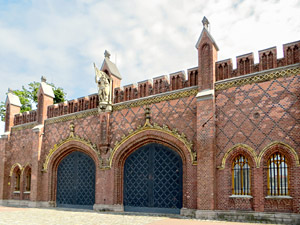 And the great philosopher is absolutely right, even a short stay in Kaliningrad increases knowledge. For example, in the field of history. Especially the ornately intertwined history of the Russian Empire and East Prussia in the 18th-19th centuries. Peter I visited Koenigsberg during the Great Embassy. In the Friedrichsburg fortress, while waiting for the arrival of the other members of the embassy, he managed to acquire the skills of artillery shooting - bombardment, as evidenced by his certificate of "perfect in throwing bombs, a careful and skillful firearms master and artist". From Koenigsberg the embassy went to Holland and England, where the future founder of the Russian fleet studied the theory and practice of shipbuilding. In the image of the Friedrichsburg fortress, forts were later built on the island of Kotlin.
And the great philosopher is absolutely right, even a short stay in Kaliningrad increases knowledge. For example, in the field of history. Especially the ornately intertwined history of the Russian Empire and East Prussia in the 18th-19th centuries. Peter I visited Koenigsberg during the Great Embassy. In the Friedrichsburg fortress, while waiting for the arrival of the other members of the embassy, he managed to acquire the skills of artillery shooting - bombardment, as evidenced by his certificate of "perfect in throwing bombs, a careful and skillful firearms master and artist". From Koenigsberg the embassy went to Holland and England, where the future founder of the Russian fleet studied the theory and practice of shipbuilding. In the image of the Friedrichsburg fortress, forts were later built on the island of Kotlin.
The memory of Queen Louise of Mecklenburg, beloved by the people of Prussia that lived a short but bright life as the wife of the Prussian King William III, is preserved in Kaliningrad and the cities of the region. Queen Louise's daughter Charlotte will become the Russian Empress Alexandra Feodorovna, wife of Emperor Nicholas I. And the most living historical exhibit of Kaliningrad is a functioning narrow-gauge tram line, the oldest in Russia. The horse tram in Konigsberg was opened in 1881 and the electric tram - in 1895. Today, the city has two tram routes on the same narrow gauge.
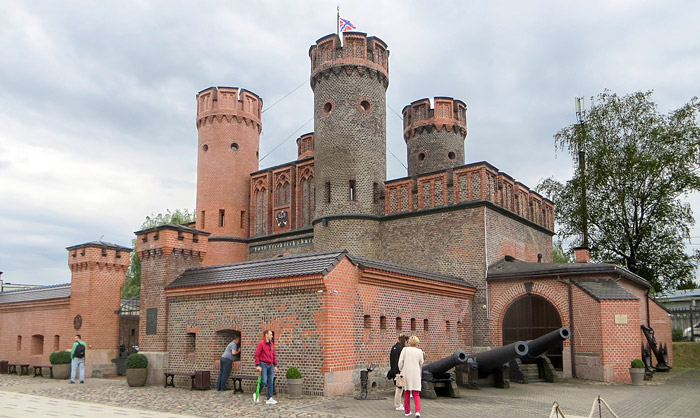
The Friedrichsburg fortress
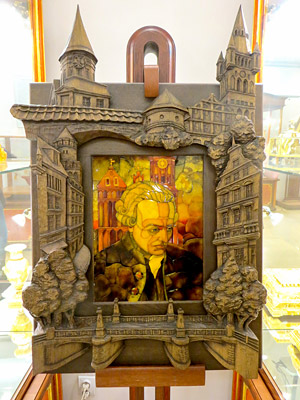 And of course, Konigsberg is the city of Kant and Hoffmann. Immanuel Kant was not only an outstanding philosopher, but it turns out, also an influential geographer of his time. He was the first to teach physical geography as an independent discipline. In his museum in the Cathedral building, among other books by the author, "Physical Geography" published in 1802 is exhibited. Did you know that in the 18th century, East Prussia became part of the Russian Empire for four years? I didn't know either. The citizens of Konigsberg swore allegiance to Empress Elizabeth Petrovna in 1759. Immanuel Kant was among them. His petition to Empress Elizabeth for the vacant position of ordinary professor at the University of Konigsberg has been preserved. The request that most likely did not reach the empress, was not satisfied. But today, some of the philosopher's sayings are available to everyone walking in the park near the Cathedral: "Have the courage to use your own mind," "Being refuted is nothing to fear, you should fear something else-being misunderstood."
And of course, Konigsberg is the city of Kant and Hoffmann. Immanuel Kant was not only an outstanding philosopher, but it turns out, also an influential geographer of his time. He was the first to teach physical geography as an independent discipline. In his museum in the Cathedral building, among other books by the author, "Physical Geography" published in 1802 is exhibited. Did you know that in the 18th century, East Prussia became part of the Russian Empire for four years? I didn't know either. The citizens of Konigsberg swore allegiance to Empress Elizabeth Petrovna in 1759. Immanuel Kant was among them. His petition to Empress Elizabeth for the vacant position of ordinary professor at the University of Konigsberg has been preserved. The request that most likely did not reach the empress, was not satisfied. But today, some of the philosopher's sayings are available to everyone walking in the park near the Cathedral: "Have the courage to use your own mind," "Being refuted is nothing to fear, you should fear something else-being misunderstood."
One of the governors of East Prussia was V.I.Suvorov that contributed to the transformation of the province into a rear base for the active Russian army. In 1761, In Koenigsberg, Vasily Ivanovich was visited by his son Alexander, a lieutenant colonel of a dragoon regiment in those times. After the death of the Empress, her nephew Peter III, that ascended the throne, immediately stopped military operations against his idol Frederick II, returned East Prussia to him and renounced all acquisitions of the Seven Years' War that Russia had actually won.
The ruins of the royal castle that existed until the 1970s, as evidenced by photographs, have been dismantled. By the way, the castle and the Cathedral turned into ruins not as a result of shelling by the Soviet army, but due to the systematic bombing of British aircraft. Today, fragments of the columns of the royal castle and frescoes of the Konigsberg Cathedral can be seen in the Zelenogradsk Local History Museum. And the House of Soviets that started to be built in the 1980s on the site of the royal castle, first turned into a long-term construction project and was never occupied by any institution, has started to deteriorate and plans to dismantle it are currently discussed.
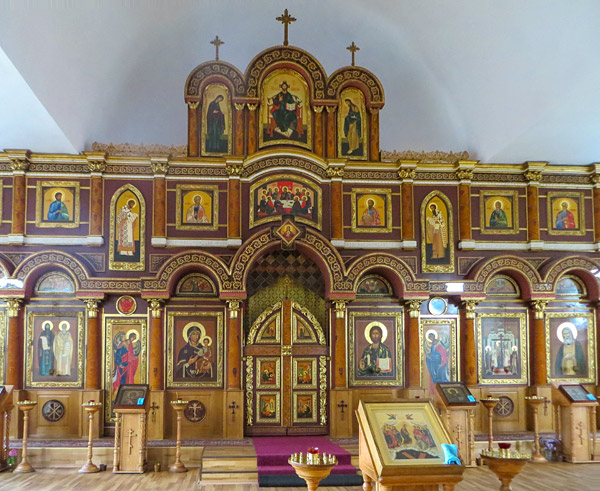
The citizens of Kaliningrad preserve in detail the history of the capture by the Soviet army of an impregnable, in the opinion of the German command, fortified city. Several museums have created dioramas that vividly represent individual moments of the assault; historical documents, USSR awards and personal belongings of the heroes are on display. The names of the military leaders that carried out the capture of the fortress city are captured in monuments, names of streets and squares.
The modern history of the city and the region started with the Decree of the Presidium of the Supreme Soviet of the USSR dated April 7, 1946 that established the Konigsberg region as part of the RSFSR. Three months later, it was renamed Kaliningrad region and its mass settlement started. Migrants from 4 autonomous republics and 27 regions of the RSFSR, 8 regions of the BSSR developed the population of the westernmost part of the USSR. The citizens of Mordovia, Chuvashia, Pskov, Novgorod, Kalinin, Bryansk, Moscow, Kursk, Voronezh, Tambov, Gorky and other regions moved to raise the destroyed city and its surroundings. Collective farmers moving to a new region were provided with free travel for their families, transportation of property and livestock and a non-refundable cash allowance - 1000 rubles for the head of the family and 300 rubles for each member; each family resettled on collective farms was assigned a plot of half a hectare; loans were issued for the construction of houses, loans for the purchase of livestock and other benefits. The memory of those times remains the coat of arms of the RSFSR of the 1920-1954 model, preserved not in a museum exhibition, but on the facade of the South Railway Station.
Adding personal observations, I note that it is very pleasant when the conductor on the bus, a young man, confirming the correctness of your route to the next attraction, briefly talks not only about it, but also advises something to see nearby. And the staff members of the library in the building next to the hotel conduct excursions in the museum-apartment of the first settlers that they had established it on their own. Local history librarians enthusiastically introduce you not only to carefully preserved household items of that time, but also to the history of the entire street and area. And the extraordinary height of the ceilings and the width of the staircases in the hotel immediately become clear - it occupies the building of a former gymnasium.
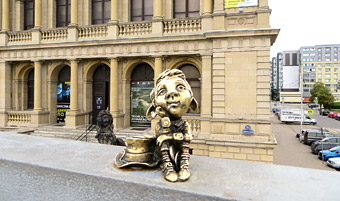
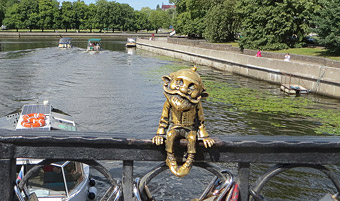
Returning to the title. Of the fortifications of Konigsberg, seven city gates, two defensive towers, forts and a bastion have been partially preserved and restored. There is no rampart, where the gates were made, the roads from which led to neighboring cities. The gates have been turned into museums or restaurants. There is no Koenigsberg, but its spirit still lives in Kaliningrad.
Olga TARANTINA, photo by the author